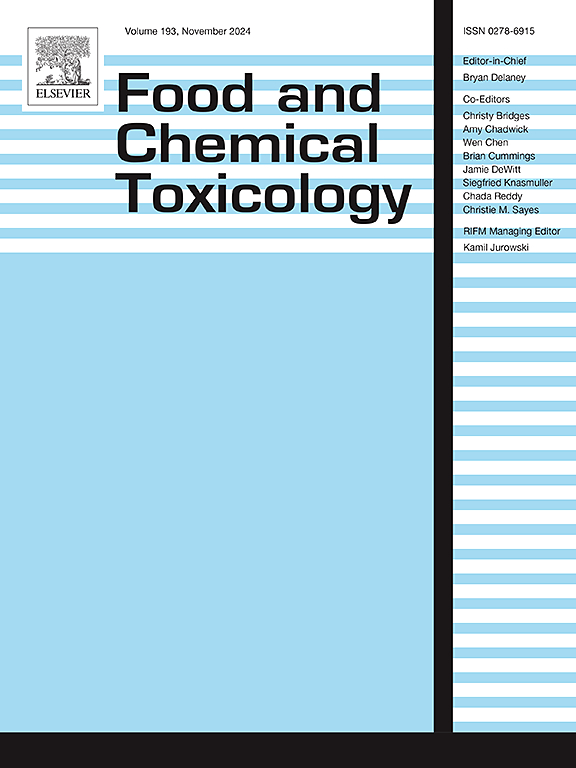Spectrum-effect relationship of the cardiovascular-protective effect of with Chrysanthemi Flos by UPLC-MS/MS and component knock-out method
IF 3.9
3区 医学
Q2 FOOD SCIENCE & TECHNOLOGY
引用次数: 0
Abstract
Chrysanthemi Flos (CF), as one of the important ‘dual-use’ plants, possesses great pharmacological research and development potential. This work aimed to find the pharmacodynamic material basis of CF in cardiovascular-protection by spectrum-effect relationship and component knock-out method. The fingerprint was established by ultra-high performance liquid chromatography and 25 peaks were picked out as common peaks. The common peaks were identified by ultra-performance liquid chromatography-quadrupole-orbitrap-mass spectrometry including twelve flavonoids, nine phenylpropanoids, three organic acids, and one nucleoside. The cardiovascular-protective effect of CF was determined by angiotensin II-induced injury model of human umbilical vein endothelial cells. Grey relation analysis, partial least squares regression analysis and Pearson's correlation analysis were performed to assess the relationship between the cardiovascular-protective effect and ingredients. Spectrum-effect relationship and component knock-out method revealed that P11 (luteolin-7-O-β-D-glucoside), P14 (3,4-O-dicaffeoylquinic acid), P16 (1,5-O-dicaffeoylquinic acid), and P17 (3,5-O-dicaffeoylquinic acid) were the pharmacological material basis for the cardiovascular-protective effect of CF. This work preliminarily elucidated the pharmacodynamic material basis of cardiovascular-protective effect of CF, which could be used to considerable methods and insight for the fundamental research of the pharmacodynamic material basis of Traditional Chinese Medicine.

求助全文
约1分钟内获得全文
求助全文
来源期刊

Food and Chemical Toxicology
工程技术-毒理学
CiteScore
10.90
自引率
4.70%
发文量
651
审稿时长
31 days
期刊介绍:
Food and Chemical Toxicology (FCT), an internationally renowned journal, that publishes original research articles and reviews on toxic effects, in animals and humans, of natural or synthetic chemicals occurring in the human environment with particular emphasis on food, drugs, and chemicals, including agricultural and industrial safety, and consumer product safety. Areas such as safety evaluation of novel foods and ingredients, biotechnologically-derived products, and nanomaterials are included in the scope of the journal. FCT also encourages submission of papers on inter-relationships between nutrition and toxicology and on in vitro techniques, particularly those fostering the 3 Rs.
The principal aim of the journal is to publish high impact, scholarly work and to serve as a multidisciplinary forum for research in toxicology. Papers submitted will be judged on the basis of scientific originality and contribution to the field, quality and subject matter. Studies should address at least one of the following:
-Adverse physiological/biochemical, or pathological changes induced by specific defined substances
-New techniques for assessing potential toxicity, including molecular biology
-Mechanisms underlying toxic phenomena
-Toxicological examinations of specific chemicals or consumer products, both those showing adverse effects and those demonstrating safety, that meet current standards of scientific acceptability.
Authors must clearly and briefly identify what novel toxic effect (s) or toxic mechanism (s) of the chemical are being reported and what their significance is in the abstract. Furthermore, sufficient doses should be included in order to provide information on NOAEL/LOAEL values.
 求助内容:
求助内容: 应助结果提醒方式:
应助结果提醒方式:


